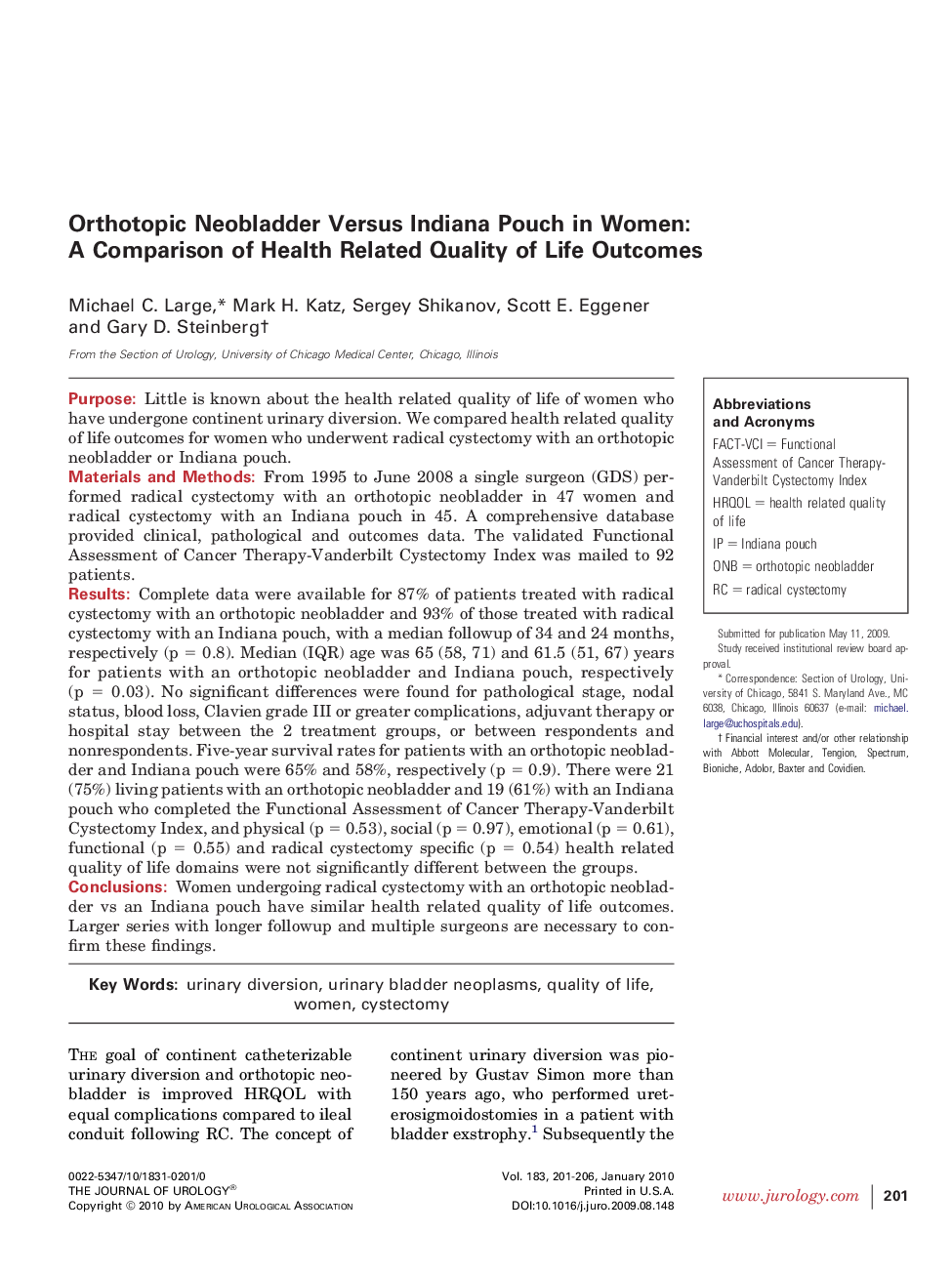| Article ID | Journal | Published Year | Pages | File Type |
|---|---|---|---|---|
| 3870883 | The Journal of Urology | 2010 | 6 Pages |
PurposeLittle is known about the health related quality of life of women who have undergone continent urinary diversion. We compared health related quality of life outcomes for women who underwent radical cystectomy with an orthotopic neobladder or Indiana pouch.Materials and MethodsFrom 1995 to June 2008 a single surgeon (GDS) performed radical cystectomy with an orthotopic neobladder in 47 women and radical cystectomy with an Indiana pouch in 45. A comprehensive database provided clinical, pathological and outcomes data. The validated Functional Assessment of Cancer Therapy-Vanderbilt Cystectomy Index was mailed to 92 patients.ResultsComplete data were available for 87% of patients treated with radical cystectomy with an orthotopic neobladder and 93% of those treated with radical cystectomy with an Indiana pouch, with a median followup of 34 and 24 months, respectively (p = 0.8). Median (IQR) age was 65 (58, 71) and 61.5 (51, 67) years for patients with an orthotopic neobladder and Indiana pouch, respectively (p = 0.03). No significant differences were found for pathological stage, nodal status, blood loss, Clavien grade III or greater complications, adjuvant therapy or hospital stay between the 2 treatment groups, or between respondents and nonrespondents. Five-year survival rates for patients with an orthotopic neobladder and Indiana pouch were 65% and 58%, respectively (p = 0.9). There were 21 (75%) living patients with an orthotopic neobladder and 19 (61%) with an Indiana pouch who completed the Functional Assessment of Cancer Therapy-Vanderbilt Cystectomy Index, and physical (p = 0.53), social (p = 0.97), emotional (p = 0.61), functional (p = 0.55) and radical cystectomy specific (p = 0.54) health related quality of life domains were not significantly different between the groups.ConclusionsWomen undergoing radical cystectomy with an orthotopic neobladder vs an Indiana pouch have similar health related quality of life outcomes. Larger series with longer followup and multiple surgeons are necessary to confirm these findings.
